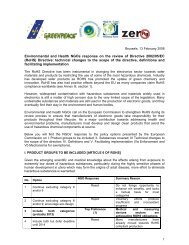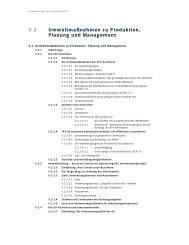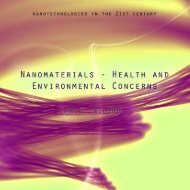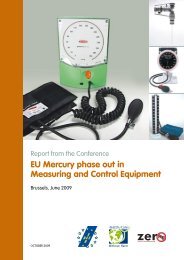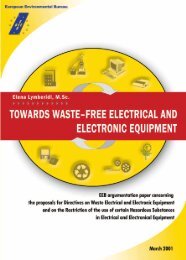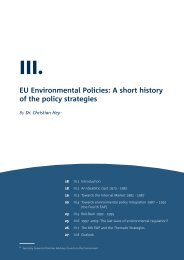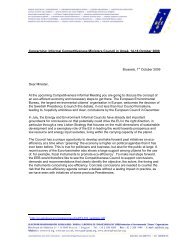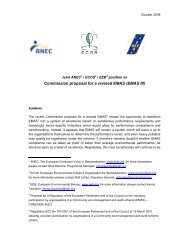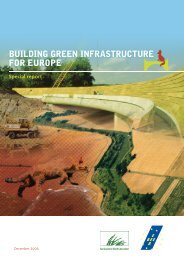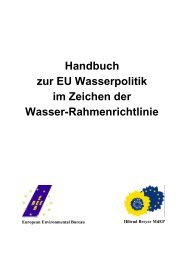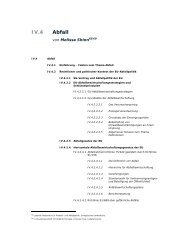Memorandum to Czech Presidency and Ten Test - EEB
Memorandum to Czech Presidency and Ten Test - EEB
Memorandum to Czech Presidency and Ten Test - EEB
- No tags were found...
You also want an ePaper? Increase the reach of your titles
YUMPU automatically turns print PDFs into web optimized ePapers that Google loves.
<strong>EEB</strong> <strong>Memor<strong>and</strong>um</strong> <strong>to</strong> the <strong>Czech</strong> EU <strong>Presidency</strong>should be substituted with safer alternatives (“c<strong>and</strong>idate list”). Cus<strong>to</strong>mers <strong>and</strong>consumer may request <strong>to</strong> receive information within 45 days of receipt of articlescontaining those substances in a concentration above 0,1%. This his<strong>to</strong>ricinformation requirement should ensure safe use of the article <strong>and</strong> as a minimumprovide the name of this substance.Only the Member States <strong>and</strong> the Commission can make proposals <strong>to</strong> ECHA <strong>to</strong>nominate additional substances. So far the European Commission hasearmarked only 5 substances. Austria <strong>and</strong> Norway also indicated that they willsubmit a dossier on a further 2 substances in <strong>to</strong>tal (tris phosphate <strong>and</strong> arsenic/itssalts).ECHA indicated that any other dossiers submitted by May 2009 could beprocessed at the same time as the 5 dossiers identified by the EuropeanCommission.Regarding the final list of substances <strong>to</strong> be put on Annex XIV (authorisation)ECHA will have <strong>to</strong> make a draft recommendation on which the Member Stateswill issue an opinion in May 2009. A final recommendation will be submitted <strong>to</strong>the Commission by June 2009 <strong>and</strong> a final decision will be taken through theregula<strong>to</strong>ry committee procedure with scrutiny, probably in autumn 2009,specifying application, sunset dates <strong>and</strong> eventual exemptions.For <strong>EEB</strong> the first c<strong>and</strong>idate list is a welcome start, but is a drop in the oceanwhen compared <strong>to</strong> the hundreds of well-known dangerous substances present inevery day products. Member States <strong>and</strong> the Commission have failed <strong>to</strong> make thelist as comprehensive as possible. An NGO coalition coordinated by theInternational Chemical Secretariat has launched the “SIN list 1.0”, which containssubstances carefully identified by independent <strong>to</strong>xicologists that fulfil the officialREACH criteria of SVHC based on publicly available scientific research. <strong>EEB</strong>hopes that this list will be used as a starting point for the next recommendationsfor inclusion in Annex XIV.It is clear that Member States <strong>and</strong> especially the presidency have a very crucial<strong>and</strong> active role <strong>to</strong> play during this process. The outcome will determine thecredibility of the REACH authorisation system in effectively reaching its objectiveof substituting hazardous substances with safer alternatives.<strong>EEB</strong> maintains that the list of SVHC recommended for substitution should bemore representative of the hundreds of hazardous chemicals currently known,therefore we ask the <strong>Czech</strong> <strong>Presidency</strong> <strong>to</strong>:- Lead by example by submitting dossiers on hazardous substances forauthorisation <strong>and</strong> call upon Member States <strong>and</strong> the Commission <strong>to</strong> makethe first list as comprehensive as possible, using the SIN list as thestarting point.43



